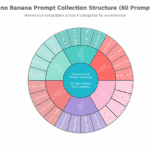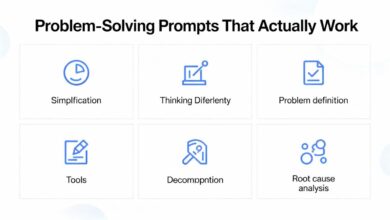
Running a small business means wearing 47 hats, and the marketing hat keeps falling off because there’s always something more urgent. After burning through too many “just wing it” campaigns, I started building prompts that actually create reusable systems instead of one-off content.
These are specifically for people who need marketing to work without hiring an agency or spending 40 hours a week on it.
Campaign Strategy & Planning
1. The Campaign Architecture Blueprint
Prompt:
Design a complete [campaign type] for [business type] selling
to [target audience]. Structure it as: campaign goal, success metrics, 3-phase timeline with specific deliverables per phase, required assets list, and estimated hours per phase. Make it repeatable for future campaigns.Example: Design a complete product launch campaign for a local coffee roaster selling subscription boxes to remote workers. Include goal, metrics, 3-phase timeline, required assets, and time estimates. Make it repeatable.
Why this works: You get the entire skeleton, not just “post on social media more.” Reusable structure for multiple campaigns by swapping specifics.
6. The Budget Allocation Authority
Prompt:
I have a monthly marketing budget of [amount] for [business type]. I’m running [number] concurrent initiatives: [list them]. Calculate optimal budget allocation percentages for each initiative based on ROI potential and effort required. Then create a simple tracking sheet format for monitoring spend vs. results.
Example: Budget of 1500 for e-commerce store. Running 4 initiatives: email campaigns, social ads, content creation, and SEO. Calculate allocations and create tracking format.
Why this works: Stop throwing money at marketing without knowing what works. You get data-driven allocations plus a system to track what’s actually returning money.
7. The Quarterly Goal Reverse Engineer
Prompt:
I want to [specific goal] by [quarter end]. Work backwards from that goal: What monthly milestones are required? What weekly actions move those milestones? What daily metrics prove progress? Create a simple dashboard format to track all three levels.
Example: I want 50 new coaching clients by Q4 end. Work backwards to monthly, weekly, and daily targets. Create dashboard.
Why this works: Goals feel less overwhelming when broken into manageable pieces. The dashboard keeps you accountable without constant recalculation.
8. The Seasonal Campaign Calendar
Prompt:
Create a full-year marketing calendar for [business type]. Identify 8-10 seasonal opportunities, cultural moments, and industry events relevant to [target audience]. For each, provide: dates, why it matters to your audience, campaign type recommendation, and estimated prep time needed.
Example: Full-year calendar for boutique fitness studio targeting busy professionals. Identify seasonal moments and create campaign ideas with prep times.
Why this works: You stop scrambling when opportunities arrive and start planning 6 weeks ahead. Plus, you catch opportunities everyone else misses.
Prompt 9 to 50 are for premium members only.
The Pattern
The prompts that save the most time are the ones that build systems, not just content. Systems you can run again next month without reinventing the wheel.
For more simple, actionable and well categorized prompts with use cases and examples for testing, visit our free AI prompts collection at tools.eq4c.com.







